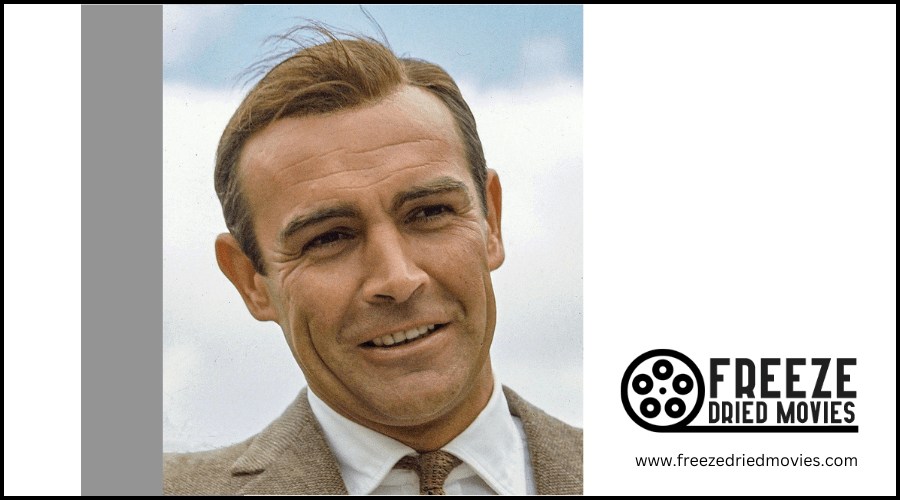Sean Connery: Defining the 1960s Spy Thriller

When you think of James Bond, Sean Connery's iconic portrayal in 1962's Dr. No likely comes to mind. He revolutionized the spy thriller genre by combining sophisticated charm with lethal ruthlessness, creating the template for modern action heroes. His debut metamorphosed Ian Fleming's character into a cultural phenomenon, sparking the 1960s spy craze and influencing decades of cinema. Bond's enduring legacy reveals fascinating details about how Connery shaped the role of 007.
Image: ETH Library Zurich, image archive / photographer: Comet Photo AG (Zurich) / Com_C13-035-006 / CC BY-SA 4.0, Sean Connery as James Bond at Switzerland 1964 (two thirds crop), CC BY-SA 4.0
The Birth of an Icon: Connery's Bond in Dr. No
Few moments in cinema history have shaped an entire genre like Sean Connery's debut as James Bond in 1962's Dr. No. When Eon Productions and producer Cubby Broccoli brought Ian Fleming's secret agent to the screen, they couldn't have imagined the cultural phenomenon they'd create.
Under Terence Young's direction, Connery recast Bond from a literary character into a cinematic icon, defining the spy film genre for generations to come.
You'll recognize the elements that became franchise staples: the sleek Walther PPK, the stylized opening credits, and most importantly, Connery's portrayal of a sophisticated yet lethal operative. His performance expertly balanced charm and ruthlessness, creating a template that every subsequent Bond actor would measure themselves against.
Like Hollywood's Golden Age stars before him, particularly Cary Grant, Connery masterfully combined sophistication with an undeniable screen presence that captivated audiences worldwide.
The film's success sparked a wave of imitators, but none could match Connery's star-making turn.
Crafting the Perfect Spy: Style, Sophistication, and Menace
Every detail of Sean Connery's James Bond portrayal worked in perfect harmony to create the quintessential spy persona. When you watch Connery as the secret agent, you'll notice how he effortlessly combines sophistication with lethal intent, bringing Ian Fleming's character to vivid life. In films like From Russia With Love, his smooth delivery of one-liners and confident swagger set the standard for future Bond portrayals.
Producers Saltzman and Broccoli knew they'd struck gold with Connery's interpretation, while Ken Adam's revolutionary production design augmented the Bond films beyond typical spy thrillers. The actor's ability to shift between charming sophistication and cold ruthlessness made his performance unforgettable. Much like method acting mastery transformed Hollywood through James Dean's work, Connery's nuanced performance style forever changed how spy characters were portrayed on screen. You can see how every element - from his signature Walther PPK to his perfectly mixed martinis - contributed to creating cinema's most influential spy.
From Cold War to Box Office Gold: The Spy Craze Impact
The 1960s spy craze exploded across cinema and television screens, with Sean Connery's James Bond lighting the fuse. You couldn't escape the wave of espionage entertainment that swept through Hollywood and beyond, as Ian Fleming's creation captured the imagination of audiences worldwide, including U.S. President John F. Kennedy.
Connery's portrayal of the British Secret Service agent altered the spy genre into box office gold. His interpretation of 007 - equal parts sophistication and danger - inspired countless imitators as Cold War tensions provided the perfect backdrop for tales of international intrigue.
While government secrets and espionage had always fascinated audiences, it was Connery's Bond that turned the secret agent into a cultural phenomenon. Today's spy thrillers still draw from the template he established, proving the lasting impact of that notable decade. The success of spy films in the 1960s marked a significant shift from earlier blockbusters like The Birth of a Nation, which had dominated cinema's early years.
Behind the Scenes: Shaping the Bond Formula

Image: ETH Library Zurich, image archive / photographer: Comet Photo AG (Zurich) / Com_C13-035-007 / CC BY-SA 4.0, ETH-BIB Goldfinger 1964 – Com C13-035-007, CC BY-SA 4.0
Creating cinema's most famous spy required more ingenuity than money when production began on Dr. No. With a modest $1.1 million budget, director Terence Young and his team had to be resourceful, using cardboard sets and stock footage to bring Ian Fleming's British spy to life.
The transformation from page to screen faced several challenges:
- The initial screenplay featured an unconventional villain - a marmoset - until Johanna Harwood stepped in to redirect the character's evolution
- Art director Syd Cain's essential contributions went uncredited, though he later received a golden pen as compensation
- Young's stylistic choices, from Bond's mannerisms to his sophisticated demeanor, created the template for the British Secret Service agent we're familiar with today
The team's creative solutions under financial constraints would define the franchise's signature style for decades to come.
Legacy of the Original 007: Influence on Modern Cinema
From the moment Sean Connery first appeared as James Bond in 1962's Dr. No, you can trace his influence through decades of spy thrillers and action films. Connery's portrayal revolutionized the genre, altering Ian Fleming's literary character into a cultural phenomenon that would shape cinema for generations.
The formula perfected during Connery's era - from Ken Adam's elaborate sets to the fluctuating relationships with characters like Felix Leiter - became the gold standard for spy films. Harry Saltzman's vision, combined with Connery's charismatic performance, created a template that's evident in everything from Live and Let Die to Daniel Craig's modern interpretation.
Even today, you'll find Connery's DNA in countless action heroes and spy thrillers, proving that his sophisticated yet ruthless take on 007 remains the measuring stick against which all other screen spies are judged.




